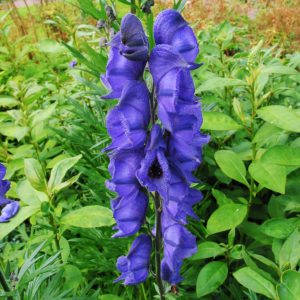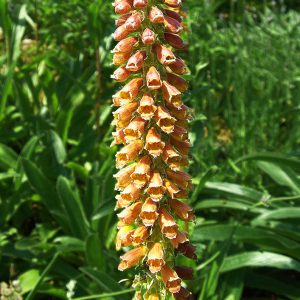- 1-9 pkts $4.50
- 10 pkts FREE
- Express post $12
Geranium pratense ‘Dark Reiter’
DARK REITER MEADOW CRANESBILL
Geranium pratense ‘Dark Reiter’ is the dark, sultry, and mysterious member of the Meadow Cranesbill family.
Because it makes compact mounds of the most sumptuous plum-purple foliage, with each leaf beautifully cut like black lace.
Then intense lilac-blue single flower discs float above the black lace foliage.
As ‘Dark Reiter’ begins to bloom from early summer, then repeats through summer and autumn.
Striking colour contrast to lift the garden
A neat and rounded growth habit, as well as the exotic dark foliage, makes Geranium pratense ‘Dark Reiter’ a treasure in a decorative container, or as a dramatic front border in a flower bed.
So it makes a lovely groundcover when mass planted; a superbly contrasting edging plant; a striking underplanting for roses; or an eye-catching individual in a mixed border or container.
Sings with colour
And when the large discs of blue-lilac blooms sit jauntily above the dark foliage – then the whole clump sings with colour.
Stunner of a groundcover
Plant Geranium pratense ‘Dark Reiter’ in Part Shade, Dappled Sun.
Where it will thrive with a minimum of attention.
It can also be planted in Full Sun in cooler districts, or where it is well mulched in summer for summer sun in hotter districts.
‘Dark Reiter’ will always enjoy mulch.
Very frost hardy
All members of the Meadow Cranesbill family are very frost hardy.
And they are all easy to grow and low care perennial plants.
So the only real work is to shear them back to the socks after blooming, to create a fresh clump of the pretty foliage.
SEED SOWING ADVICE:
Geranium pratense ‘Dark Reiter’ can be sow in punnets indoors for best and optimum results / or scattered in the garden in late winter-early spring.
INDOORS: Sow the seed in a punnet on the surface of good quality seed raising mix.
Then gently press the seed into the surface of the mix to ensure good contact.
Now barely cover the seed with grit/mix/sand/vermiculite.
Continue to keep the punnet moist at temperatures of approximately 15-20 °C, for 2-4 weeks, in a well-lit position.
Then wrap punnet in cling wrap & place in fridge (not freezer) for 4-6 weeks.
Because this will mimic winter, and convince the seeds it is time to break their dormancy.
After the period of chilling, remove the punnet from the fridge, unwrap & return to a well-lit position (not in direct sun) at temperatures of approximately 15-20 °C.
Then most seedlings should emerge in approx. 30 to 90 days.
But do not discard the punnet, as some seedlings may come later. This is a natural trick by the plant to stagger germination and give it’s seeds the best chance for some to emerge into favourable conditions.
SEED COUNT: 3 seeds per pack approx. Seed from ‘Dark Reiter’ is not often available. And we have very limited number available this year.
GROWING: Geranium pratense ‘Dark Reiter’
Height with flowers: 20-25cm High in flower.
Width: 60-60cm. Wide clump of stunning purple-dark foliage.
Position: Shade or dappled light for part of the day is preferred, particularly in hotter areas. However, in cooler areas, or gardens that are well mulched and tended, then Geranium pratense ‘Dark Reiter’ can happily tolerate full sun exposure.
Easy to grow
Growth: Hardy and long-lived perennial clump that gently increases in size and flower-power each year.
Soil: Geranium pratense ‘Dark Reiter’ tolerates a wide range of soils, including sandy, loam or heavier clay-based soils; acid or alkaline lime-based soils on either side of neutral pH.
However all soil types should be well-drained.
‘Dark Reiter’ will appreciate the addition of compost and organic matter to any soil.
Frost: Very frost hardy. Hardy down to at least -20C, depending on conditions.
Water: Geranium pratense ‘Dark Reiter’ requires only average garden water and is not a particularly thirsty plant, when it is well mulched and has organic matter added to the garden site.
Gorgeous in garden or pots
Pots: Excellent pot specimen with striking dark foliage colour contrasting beautifully with intense lilac-blue flowers. Plus decorative cut leaf shapes.
Bees & Birds: The flowers are visited by bees and other beneficial pollinating insects and are very useful for butterflies.
Low maintenance
Care & Maintenance: Low maintenance plant. You can cut back the foliage after flowering if you wish, and this promotes new crops of those beautiful dark contrasting leaves and glowing flowers. But it is not essential maintenance.
Fertilizer: Fertilizer can be applied in spring and autumn to keep the clump vigorously growing lovely leaves and flowers.
We recommend to water in with Seasol at planting. Then follow up with Seasol foliar feeds.
Pruning: The clump can be cut back whenever you wish to tidy it up or regenerate new growth. But it is not essential work.
Pests & Diseases: Rarely troubled by pests or diseases.
A LITTLE HISTORY:
CRANESBILLS IN THE LANGUAGE OF FLOWERS
The botanical name for Geraniums comes from an ancient word “geranos” the Greek word for Crane.
And of course, it refers to the graceful shape of the decorative seed pods.
But by Victorian times our sweet little Cranesbills had become loaded with meaning.
By sending a Cranesbill flower to a friend you were telling them they meant joy and staunch friendship to you.
The gift of a Cranesbill plant was meant to bring good health and protection to your friend, though it could also bring fertility – so be careful who you give it to!
Click here for Nursery Open Days & Open Gardens Information
https://www.gardivalia.com.au/open-gardens
Click here to go back to Seeds Shop
https://www.seedscape.net.au/shop/
Related products
-
Add to WishlistAlready In WishlistAdd to Wishlist
-
Add to WishlistAlready In WishlistAdd to Wishlist
-
Add to WishlistAlready In WishlistAdd to Wishlist
-
Add to WishlistAlready In WishlistAdd to Wishlist





